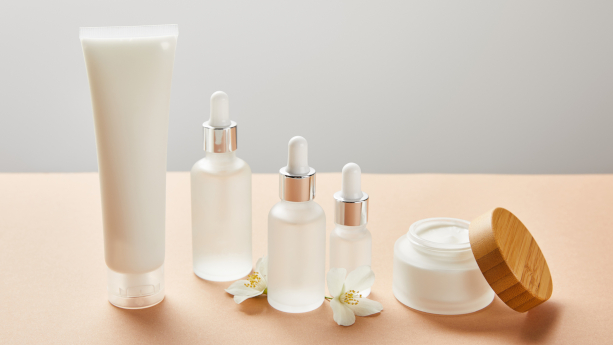
All cosmetic products must be subject to a safety assessment before being sold in EU markets. A key document that is produced during this stage is the Cosmetic Product Safety Report (CPSR) which is required to ultimately place the product in the market.
In this guide, we address common questions concerning the CPSR, unveil the individuals and businesses that are necessarily involved with its production, and provide a list of companies that provide related services.
Content Overview

FREE CONSULTATION CALL (US, EU & UK)
- Request a free 30-minute call with Ivan Malloci to learn how we can help you with:
- Find product requirements
- Certification and labeling
- Lab testing
What is a cosmetic product safety report?
The CPSR documents the safety assessment that has been conducted on the cosmetic product and is used to demonstrate that the product complies with the safety requirements of the Cosmetic Products Regulation. A responsible person and a safety assessor are responsible for the ultimate creation of the report.
The contents of the CPSR are comprised of two parts:
a. Cosmetic product safety information (Part A) – Created by a responsible person
b. Cosmetic product safety assessment (Part B) – Created by a safety Assessor
Both Part A and B are contained in the Annex I of the regulation.
Once created, the responsible person must ensure that the CPSR forms part of the product information file.
Below we provide more information about the safety assessment that needs to be conducted for the cosmetic product. Subsequently, we expand on both roles of the safety assessor, responsible person, and other parties that may be involved in the process of creating the CPSR.
Safety assessment
Here we explain the importance of the safety assessment of the cosmetic product and the role that the safety assessor plays in this assessment, including their role in the creation of the CPSR.
What is a safety assessment?
The safety assessment refers to the process in which the safety aspects of the cosmetic product are examined and assessed. The safety assessment is recorded in the CPSR.
What is the purpose of a cosmetics safety assessment?
The purpose of the safety assessment is to ensure that the cosmetic product is safe for the public. Aside from the cosmetic product itself, its packaging container and the labelling information that accompanies it are taken into account in the safety assessment.
Is the safety assessment mandatory?
Yes, the safety assessment of the cosmetic product is compulsory under Article 10 of the Cosmetic Products Regulation:
“In order to demonstrate that a cosmetic product complies with Article 3, the responsible person shall, prior to placing a cosmetic product on the market, ensure that the cosmetic product has undergone a safety assessment on the basis of the relevant information and that a cosmetic product safety report is set up in accordance with Annex I.”
Is a safety assessment the same thing as lab testing?
The safety assessment involves testing the cosmetic product to retrieve information about it. Ultimately, this information is examined, assessed and documented in the CPSR.
However, the safety assessment is more than just information retrieved from the results of a set of tests conducted in a lab. For instance, the safety assessment requires a safety assessor to evaluate the labelling information accompanying the cosmetic product.
How does the safety assessment relate to the cosmetic product safety report?
The safety assessment refers to a process in which the cosmetic product is assessed for safety. The CPSR documents the information used as a basis for the safety assessors’ evaluation of the safety aspects of the cosmetic product.
What is a safety assessor?
A safety assessor is a person who is qualified to make an assessment of the safety of the cosmetic product according to the Cosmetic Products Regulation. The assessment and the reasoning employed are recorded in part B of the CPSR.
Who can be a safety assessor?
The safety assessor must be a person who possesses formal qualifications in:
- Pharmacy
- Toxicology
- Medicine
- A similar discipline recognised by the EU member state.
Such qualifications include university degree diplomas or other awards recognized by EU member states. The safety assessor is required to provide their academic credentials in part B of the CPSR.
Where can I find a safety assessor?
What matters is that the safety assessor possesses the relevant qualifications stated above. Such individuals are commonly found working for lab testing companies, like SGS and Intertek.
However, some companies may opt to hire a safety assessor as an in-house employee to complete the cosmetic product safety report.
Responsible person
The responsible person is a natural or legal person (e.g. a company) that is based in the EU and is in charge of ensuring the conformity of the cosmetic product with the Cosmetic Products Regulation.
The responsible person can be:
- The manufacturer
- The importer
- The distributor
- A person established in the EU that is assigned by either the manufacturer or importer
The safety assessment is primarily responsible for the safety assessment of the product and the selection of the safety assessor. He is responsible for ensuring that the CPSR is kept up to date even after the cosmetic product is placed in the EU market.
Part A: Cosmetic product safety information
The responsible person is primarily responsible for compiling Part A of the CPSR. The information recorded in this part may require the involvement of other third parties. For instance, a lab testing company may be involved as certain sections of CPSR require testing. Additionally, suppliers who provide the cosmetic product’s ingredients may need to be engaged to retrieve information required for this part of the CPSR.
The following is the minimum information that must recorded in the CPSR. Notice that some sections necessarily require tests to be conducted.
| Cosmetic product safety information | Notes |
| Quantitative and qualitative composition of the cosmetic product | This section covers the composition of the cosmetic product. It should disclose the chemical identity of the substances used in the cosmetic product and their intended function.
For perfume and aromatic compositions, the description of the name and code number of the composition and the identity of the supplier should be disclosed here. |
| Physical/chemical characteristics and stability of the cosmetic product | This section contains information concerning the physical and chemical characteristics relating to the cosmetic product.
Additionally, information compiled regarding the stability of the cosmetics product under reasonably foreseeable storage conditions is documented here. |
| Microbiological quality | This section should contain the microbiological specifications of the substance or mixture and the cosmetic product. |
| Impurities, traces, and information about the packaging material | This section covers information concerning the packaging material used for the cosmetic product. |
| Normal and reasonably foreseeable use | A description of the foreseeable use of the product with consideration of the accompanying labelling information (e.g. warning labels) should be provided here. |
| Exposure to the cosmetic product | This section covers information relating to the exposure to the cosmetic product (e.g. the site of application for the product). |
| Exposure to the substances | This section should contain information on the exposure to the substances contained in the cosmetic product. |
| Toxicological profile of the substances | The toxicological profile of substances contained in the cosmetic product should be contained in this section. |
| Undesirable effects and serious undesirable effects | This part contains information (for instance, statistical data) on the undesirable effects and serious undesirable effects of the cosmetic product. |
| Information on the cosmetic product | Other relevant information and risk assessment findings can be inputted in this section. |
Part B: Cosmetic product safety assessment
Once Part A of the CPSR is completed, the safety assessor can assess the information compiled and evaluate the safety of the cosmetic product. The results of the evaluation and the reasoning are recorded in Part B of the CPSR.
Because safety assessors may reject the cosmetic product, hiring or engaging a third-party safety assessor earlier on in the process (before the completion of Part A of the CPSR) may be more advantageous.
Part B of the CPSR should contain the following information in its respective sections:
| Cosmetic product safety assessment | Notes |
| Assessment conclusion | The safety assessor should write a conclusory statement on the safety of the cosmetic product.
The cosmetic product’s packaging and accompanying labelling information are taken into account by the safety assessor. |
| Labelled warnings and instructions of use | The safety assessor can comment here on the necessity of any specific warning(s) and instruction(s) for the cosmetic product. |
| Reasoning | This section will contain explanations of the scientific reasoning supporting the assessment conclusions of the safety assessor for the two previous sections above. |
| Assessor’s credentials and approval of part B | The safety assessor will provide the following information here:
|




















